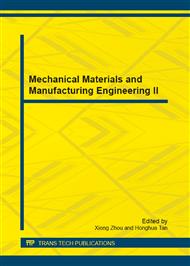p.551
p.555
p.561
p.567
p.573
p.578
p.584
p.589
p.594
The Application and Research of the Fuzzy PID Control in the Afterheat Recovery System of Temperature Constant and Frequency Variable
Abstract:
In the afterheat recovery process, the heat pump has high request to the heat-source water’s temperature stability. This article uses the method of temperature constant and frequency variable to guarantee the stability of heat-source water. However, the afterheat recovery system is a dynamic engineering system and the parameters of normal PID can not real-time tuning, it has bad Control effect. Therefore, this article combines fuzzy control and PID control to get a fuzzy PID controller with its parameters can be tuned to improve the adaptation ability for the time-varying of parameters. And we use it to improve the performance of steady and dynamic states for the controlled object. Modeling and simulating to the system by the Simulink and the fuzzy toolbox in the MATLAB and examining the control effect of the system.
Info:
Periodical:
Pages:
573-577
Citation:
Online since:
December 2012
Authors:
Price:
Сopyright:
© 2013 Trans Tech Publications Ltd. All Rights Reserved
Share:
Citation:


